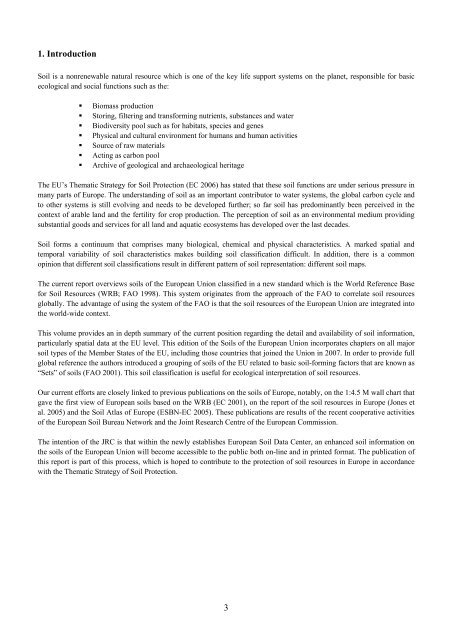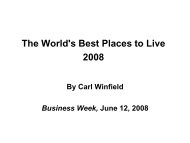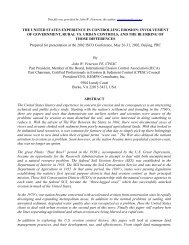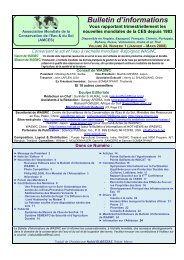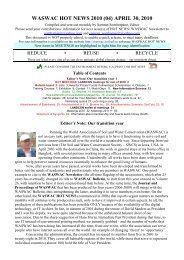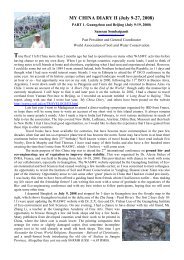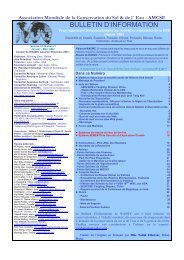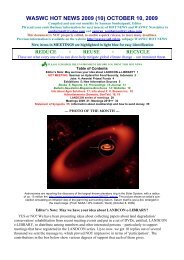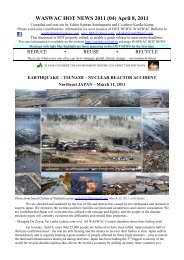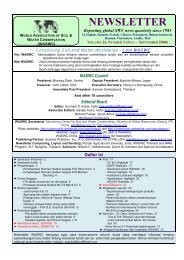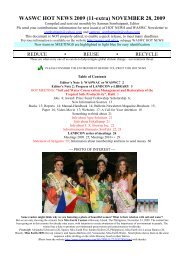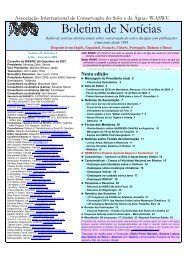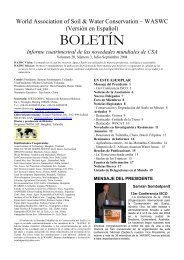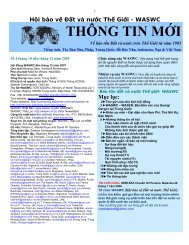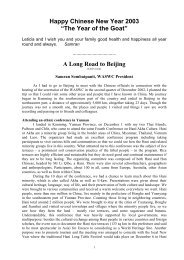Soils of the European Union - European Soil Portal - Europa
Soils of the European Union - European Soil Portal - Europa
Soils of the European Union - European Soil Portal - Europa
Create successful ePaper yourself
Turn your PDF publications into a flip-book with our unique Google optimized e-Paper software.
1. Introduction<strong>Soil</strong> is a nonrenewable natural resource which is one <strong>of</strong> <strong>the</strong> key life support systems on <strong>the</strong> planet, responsible for basicecological and social functions such as <strong>the</strong>:• Biomass production• Storing, filtering and transforming nutrients, substances and water• Biodiversity pool such as for habitats, species and genes• Physical and cultural environment for humans and human activities• Source <strong>of</strong> raw materials• Acting as carbon pool• Archive <strong>of</strong> geological and archaeological heritageThe EU’s Thematic Strategy for <strong>Soil</strong> Protection (EC 2006) has stated that <strong>the</strong>se soil functions are under serious pressure inmany parts <strong>of</strong> Europe. The understanding <strong>of</strong> soil as an important contributor to water systems, <strong>the</strong> global carbon cycle andto o<strong>the</strong>r systems is still evolving and needs to be developed fur<strong>the</strong>r; so far soil has predominantly been perceived in <strong>the</strong>context <strong>of</strong> arable land and <strong>the</strong> fertility for crop production. The perception <strong>of</strong> soil as an environmental medium providingsubstantial goods and services for all land and aquatic ecosystems has developed over <strong>the</strong> last decades.<strong>Soil</strong> forms a continuum that comprises many biological, chemical and physical characteristics. A marked spatial andtemporal variability <strong>of</strong> soil characteristics makes building soil classification difficult. In addition, <strong>the</strong>re is a commonopinion that different soil classifications result in different pattern <strong>of</strong> soil representation: different soil maps.The current report overviews soils <strong>of</strong> <strong>the</strong> <strong>European</strong> <strong>Union</strong> classified in a new standard which is <strong>the</strong> World Reference Basefor <strong>Soil</strong> Resources (WRB; FAO 1998). This system originates from <strong>the</strong> approach <strong>of</strong> <strong>the</strong> FAO to correlate soil resourcesglobally. The advantage <strong>of</strong> using <strong>the</strong> system <strong>of</strong> <strong>the</strong> FAO is that <strong>the</strong> soil resources <strong>of</strong> <strong>the</strong> <strong>European</strong> <strong>Union</strong> are integrated into<strong>the</strong> world-wide context.This volume provides an in depth summary <strong>of</strong> <strong>the</strong> current position regarding <strong>the</strong> detail and availability <strong>of</strong> soil information,particularly spatial data at <strong>the</strong> EU level. This edition <strong>of</strong> <strong>the</strong> <strong><strong>Soil</strong>s</strong> <strong>of</strong> <strong>the</strong> <strong>European</strong> <strong>Union</strong> incorporates chapters on all majorsoil types <strong>of</strong> <strong>the</strong> Member States <strong>of</strong> <strong>the</strong> EU, including those countries that joined <strong>the</strong> <strong>Union</strong> in 2007. In order to provide fullglobal reference <strong>the</strong> authors introduced a grouping <strong>of</strong> soils <strong>of</strong> <strong>the</strong> EU related to basic soil-forming factors that are known as“Sets” <strong>of</strong> soils (FAO 2001). This soil classification is useful for ecological interpretation <strong>of</strong> soil resources.Our current efforts are closely linked to previous publications on <strong>the</strong> soils <strong>of</strong> Europe, notably, on <strong>the</strong> 1:4.5 M wall chart thatgave <strong>the</strong> first view <strong>of</strong> <strong>European</strong> soils based on <strong>the</strong> WRB (EC 2001), on <strong>the</strong> report <strong>of</strong> <strong>the</strong> soil resources in Europe (Jones etal. 2005) and <strong>the</strong> <strong>Soil</strong> Atlas <strong>of</strong> Europe (ESBN-EC 2005). These publications are results <strong>of</strong> <strong>the</strong> recent cooperative activities<strong>of</strong> <strong>the</strong> <strong>European</strong> <strong>Soil</strong> Bureau Network and <strong>the</strong> Joint Research Centre <strong>of</strong> <strong>the</strong> <strong>European</strong> Commission.The intention <strong>of</strong> <strong>the</strong> JRC is that within <strong>the</strong> newly establishes <strong>European</strong> <strong>Soil</strong> Data Center, an enhanced soil information on<strong>the</strong> soils <strong>of</strong> <strong>the</strong> <strong>European</strong> <strong>Union</strong> will become accessible to <strong>the</strong> public both on-line and in printed format. The publication <strong>of</strong>this report is part <strong>of</strong> this process, which is hoped to contribute to <strong>the</strong> protection <strong>of</strong> soil resources in Europe in accordancewith <strong>the</strong> Thematic Strategy <strong>of</strong> <strong>Soil</strong> Protection.3


